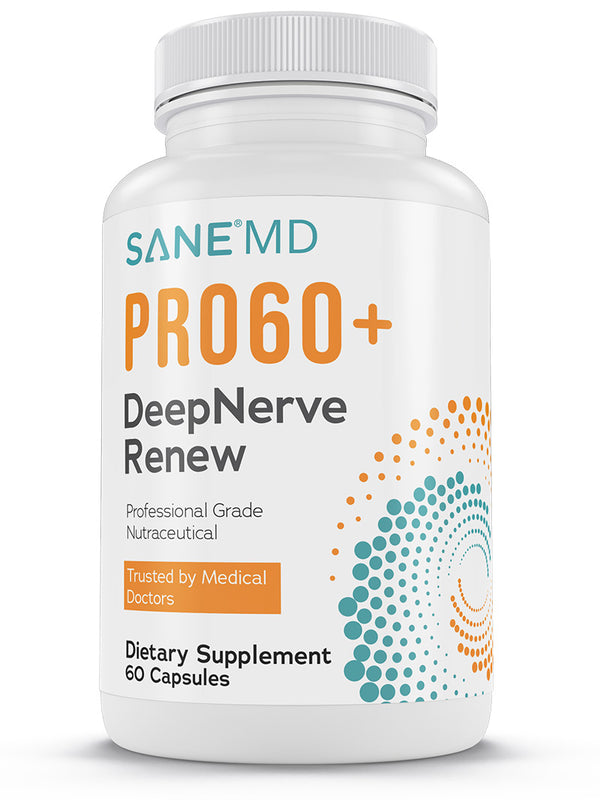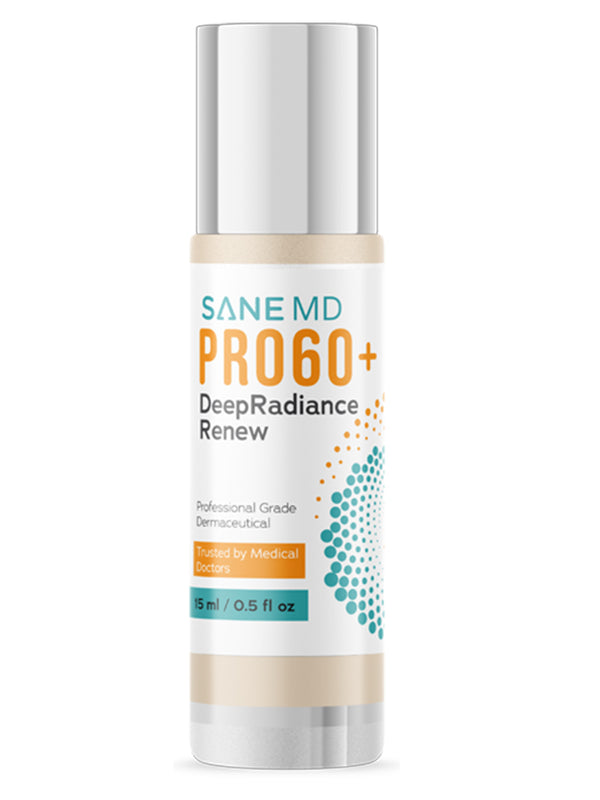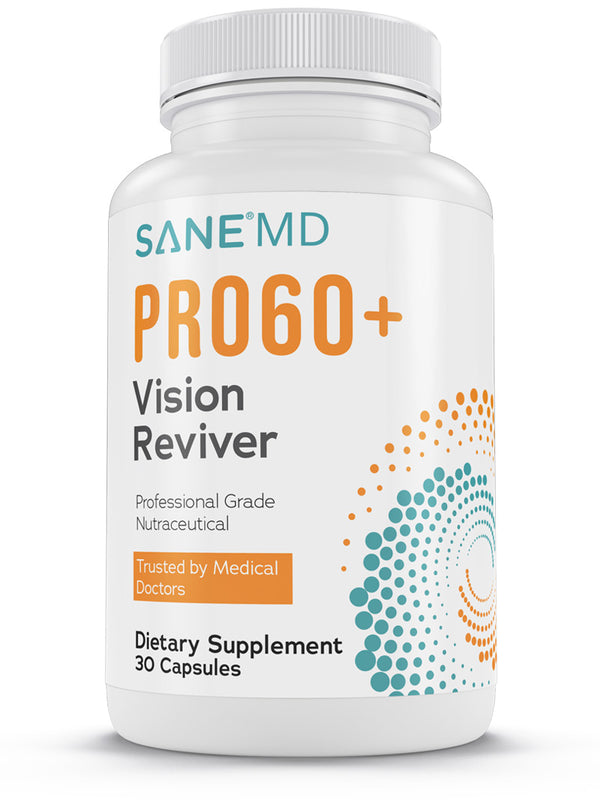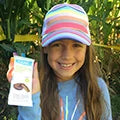Your gut is a powerhouse that works hard every day to keep you feeling your best. From digestion to immune function, its importance cannot be overstated. Today, we’re touring the world of probiotics—those friendly bacteria that are key to gut health and beyond. Probiotic foods are part of complementary and alternative medicine for digestive health.
Click here to learn more about Viscera-3 and to place your order now while supplies last!
Think of your gut as a city full of life. Just like any city, it needs balance and support to function at its best. Probiotics are like good neighbors, keeping everything running smoothly and in harmony. Incorporating natural probiotic foods into your daily diet can enhance gut health and well-being.
We’ll explore seven foods rich in beneficial microbes. These aren’t just ordinary foods; they’re your sidekicks to wellness. From tangy fermented treats to everyday pantry staples, each has its own probiotic punch to nourish your gut and support your body’s defenses.
Join us for the probiotic food party. Together, we’ll crack the code to a healthier gut and a happier you. Stay tuned; your gut will thank you!
Probiotics: Nature’s Gut Guardians
Probiotics—you may have heard the term thrown around in health circles, but what are they? These tiny superheroes are living microorganisms that have many health benefits when consumed in adequate amounts. They’re like your gut’s maintenance team, working behind the scenes to keep everything in balance.
Probiotics come in two main forms: supplements and those found in food. Supplements are concentrated doses of specific probiotic strains packaged into convenient capsules or powders. They’re designed to support digestive health and immune function.
On the other hand, probiotics in food are a natural and tasty way to increase your intake. These foods undergo fermentation, where beneficial bacteria break down sugars and starches. This not only preserves the food but also increases its nutritional value. Think of fermented foods like yogurt, kefir, and sauerkraut—they're not just delicious; they’re also nourishing your gut ecosystem. Acquiring probiotics through food can enhance the microbiome and provide additional nutrients, making it a holistic approach to gut health.
What makes a food probiotic? It’s all about the live cultures. During fermentation, beneficial bacteria like Lactobacillus and Bifidobacterium multiply and create a rich source of probiotics. These live cultures survive digestion and get to your gut, where they can do their magic.
In the next sections, we’ll be exploring probiotic foods, each with its own unique blend of beneficial bacteria. Get ready to see how these tiny critters impact your health and well-being. Let’s get started and uncover the natural magic of probiotics for a healthier you.
The Gut Microbiome: Your Body’s Hidden Hero
Inside your digestive system lies a city of trillions of microorganisms—the gut microbiome, a living ecosystem key to human health. Think of it as a city with many inhabitants working together to keep everything in harmony.
At the center of this microbiome are bacteria, both good and bad. The balance of these bacteria is key to digestive health, immune function, and even mental well-being. Like those in probiotics, good bacteria help crowd out bad microbes and support a strong gut lining.
But the gut microbiome does more than just help with digestion. It’s connected to other parts of your body and influences everything from inflammation levels to nutrient absorption. Research suggests that an imbalance of gut bacteria, known as dysbiosis, can contribute to many health issues, including digestive disorders, autoimmune conditions, and even mood disorders.
Nurturing a healthy gut microbiome is not just about what you eat; it’s about feeding this ecosystem. A high-fiber diet feeds beneficial bacteria and promotes their growth and diversity. Prebiotics in foods like onions, garlic, and bananas also fuel probiotics' growth.
As we continue to explore probiotics and gut health, remember that your gut microbiome is key to your overall well-being. Understanding and supporting this hidden hero can unlock many health benefits and a healthier, happier you.
Signs of an Imbalanced Gut Microbiome: What to Look Out For
Your gut microbiome, the city of bacteria in your digestive system, is in delicate balance. When that balance is disrupted, it can manifest in many ways throughout your body. Recognizing the signs of an imbalanced gut microbiome is key to taking proactive action to restore balance and support your overall health.
Digestive Discomfort
One of the most obvious signs of an imbalanced gut microbiome is digestive discomfort, which can include bloating, gas, constipation, or diarrhea. These symptoms mean the balance of bacteria in your gut has been disrupted, affecting how your digestive system processes food and absorbs nutrients.
Persistent Fatigue
Feeling tired all the time or lacking energy despite getting enough rest could be linked to an imbalanced gut microbiome. When bad bacteria outnumber good bacteria, it can lead to inflammation and reduced nutrient absorption, both of which contribute to fatigue.
Mood Swings and Anxiety
Your gut health can impact your mental health and mood. An imbalanced microbiome can cause mood swings, anxiety, or even depression. This is often referred to as the gut-brain axis, where communication between your gut and brain affects your emotional well-being.
Weight Changes
Unexplained weight gain or struggling to lose weight despite eating well and exercising regularly could be an imbalanced gut microbiome. Research suggests certain types of gut bacteria regulate metabolism and fat storage, so an imbalance can disrupt these processes.
Skin Issues
Your skin reflects your gut health. When gut bacteria are imbalanced, conditions like acne, eczema, or rosacea can worsen. Inflammation from an imbalanced microbiome can cause skin irritation and flare-ups.
Food Intolerances
Developing new food intolerances or reacting more to foods you used to be okay with could indicate an imbalanced gut microbiome. The disruption in gut bacteria can affect how your immune system responds to certain foods and cause digestive discomfort or allergic-like reactions.
Weakened Immune System
A large part of your immune system is in your gut, where gut bacteria are key to immune function. An imbalanced microbiome can weaken your immune response, making you more prone to infections, colds, and other illnesses.
Now that you know the signs of an imbalanced gut microbiome, you can take action to restore balance. Through dietary changes, probiotic supplementation, and lifestyle changes that support gut health, you can rebalance your microbiome and support your overall health.
Nature’s Probiotic: 7 Best Fermented Foods
Fermenting foods, a practice that’s been around for thousands of years, takes ordinary foods and turns them into nutritional superfoods packed with probiotics. This natural process involves good bacteria breaking down sugars and starches, creating an environment rich in live cultures that support gut health.
Adding fermented foods to your diet not only adds flavor but also introduces a variety of probiotics, like lactic acid bacteria.
Here are 7 foods that contain probiotics:
1. Yogurt
Yogurt is a probiotic food created by fermenting milk with live, active cultures of bacteria, such as Lactobacillus bulgaricus and Streptococcus thermophilus.These cultures survive digestion and colonize your gut, supporting digestive health and immune function. Make sure to check the food label to ensure it contains live and active cultures.
2. Kefir
Like yogurt but thinner in consistency, kefir is a fermented milk drink made with kefir grains. These grains are not actual grains but a combination of bacteria and yeast that ferment milk. Kefir has a broader spectrum of probiotics than yogurt and is rich in vitamins, minerals, and amino acids.
3. Sauerkraut
This tangy condiment is made from fermented cabbage and is often flavored with caraway seeds. Like all fermented foods, sauerkraut contains live and active cultures. During fermentation, naturally present Lactobacillus bacteria convert sugars in cabbage into lactic acid, preserving the cabbage and creating a probiotic-rich food that supports digestive health and may reduce inflammation.
4. Kimchi
Kimchi is a popular Korean dish. It’s made from fermented vegetables like cabbage and radishes and is often seasoned with spicy flavors. It’s seasoned with ingredients like chili pepper, garlic, and ginger before fermentation. Kimchi is rich in probiotics and antioxidants and may support gut health and immune function.
5. Miso
A Japanese seasoning, miso is made by fermenting soybeans with salt and a koji fungus. The fermentation process can vary, resulting in different types of miso with different flavors and probiotic content. Miso is also rich in nutrients and may support digestive health and antioxidants.
6. Tempeh
Originating from Indonesia, tempeh is made from fermented soybeans. It has a firm texture and nutty flavor. It’s made by fermenting whole soybeans with a mold called Rhizopus oligosporus. Tempeh provides probiotics and is a good source of protein, vitamins, and minerals.
7. Pickles
Not all pickles are fermented, but those that are (like traditional sour pickles) are probiotic-rich. Cucumbers and other vegetables are preserved in a brine solution with spices and left to ferment. The lactobacilli bacteria that develop during fermentation support digestive health and may boost immune function.
Add these probiotic-rich foods to your diet to diversify your gut microbiome and overall health. (You can make your own fermented foods.) Enjoy them on their own or as a flavorful addition to meals. These fermented treats will help nourish your gut and reap the benefits of nature’s probiotic goodness.

Lifestyle Changes for Optimal Gut Health
Gut health isn’t just about what you eat but also about lifestyle choices that support a healthy microbiome. These changes will complement your dietary changes and create an environment where good gut bacteria can thrive.
These small changes to your daily routine can support gut health and overall well-being without focusing on food.
Manage Stress
Chronic stress can upset the balance of bacteria in your gut and cause digestive issues. Incorporate stress management techniques like deep breathing, meditation, yoga, or spending time in nature to reduce stress and support a healthy microbiome.
Get Good Sleep
Sleep is essential for overall health, including gut health. During sleep, your body repairs and regenerates tissues, including those in your digestive system. Aim for 7-9 hours of sound sleep each night to support gut function and microbial balance.
Exercise Regularly
Exercise is good for heart health, strengthens muscles, and supports gut health. It helps stimulate digestion and bowel regularity, which can support a balanced microbiome. Aim for at least 30 minutes of moderate exercise most days of the week to support gut motility and overall well-being.
Stay Hydrated
Drinking water throughout the day is essential for optimal digestion and gut health. Adequate hydration softens stool and helps remove waste efficiently, preventing constipation and creating a balanced microbial environment in your intestines.
Avoid Antibiotics
Antibiotics are necessary to treat bacterial infections, but using them excessively or when not needed can upset the balance of bacteria in your gut. Work with your healthcare provider to use antibiotics wisely and explore alternative treatments when you can.
Implementing these changes into your daily routine will create an environment for your gut microbiome to flourish. These holistic approaches support digestive health and overall well-being, so you can feel your best inside out.
Probiotic Supplements: Benefits and Considerations
Probiotic dietary supplements are a convenient way to increase your intake of beneficial bacteria if you can’t consume probiotic-rich foods regularly. These supplements contain specific strains of bacteria like Lactobacillus and Bifidobacterium, which are known for their health benefits. They come in various forms: capsules, tablets, powders, and liquids, each designed to deliver live cultures to your gut.
Probiotic supplements may support digestive health, boost immune function, and potentially relieve symptoms of IBS or antibiotic-associated diarrhea. However, consider the risks, too. Some people may experience mild digestive discomfort like bloating or gas when starting probiotic supplements, but these symptoms usually subside over time as the body adjusts.
There is also the issue of quality and efficacy of probiotic supplements, as not all products on the market contain the live cultures they claim or may not survive the stomach's acidic environment to reach the intestines. Choosing reputable brands and talking to your healthcare provider can help minimize these risks. Before beginning probiotic supplements, it's important to consult with your healthcare provider, especially if you have a compromised immune system or severe health conditions, to ensure that they are safe for you.
Probiotic supplements can benefit many, but they should complement, not replace, a balanced diet rich in probiotic foods and lifestyle habits. By knowing the benefits and risks of probiotic supplements, you can make informed decisions for your gut health and overall well-being.
How to Boost Your Probiotic Intake
Incorporating probiotic-rich foods into your diet doesn’t have to be hard. With a few simple changes, you can sneak more of these beneficial bacteria into your meals and snacks without fuss.
Whether you’re a chef or a quick-and-easy recipe kind of person, there are many ways to enjoy probiotic foods throughout the day.
-
Smoothies with Yogurt or Kefir: Start your day with a probiotic boost by adding yogurt or kefir to your morning smoothie. Blend together your favorite fruits, leafy greens, and a generous scoop of yogurt or kefir for a creamy, nutrient-packed treat that supports digestive health.
-
Top Salads with Fermented Veggies: Add a tangy twist to your salads by topping with fermented vegetables like sauerkraut or kimchi. These probiotic-rich additions not only add flavor and texture but also benefit bacteria in your gut microbiome.
-
Use Miso in Dressings and Marinades: Miso paste isn’t just for soup; it’s a versatile ingredient that can elevate dressings, marinades, and sauces. Mix miso with olive oil, lemon juice, and herbs for a savory salad dressing, or use it as a marinade for tofu, fish, or chicken before grilling or baking.
-
Enjoy Pickled Snacks: Keep a jar of pickles or pickled vegetables on hand for a quick and crunchy probiotic snack. Enjoy straight from the jar or add it to sandwiches, wraps, or cheese platters for an extra burst of flavor and gut-friendly goodness.
-
Include Tempeh in Stir-Fries and Buddha Bowls: Swap out traditional protein sources for Tempeh in stir-fries, Buddha bowls, or grain bowls. This fermented soybean product adds a nutty flavor, hearty texture, and probiotics to support digestive health.
With these simple tips, you can sneak more probiotic foods into your diet without even trying. Whether you want to add flavor, support gut health, or try something new, these delicious additions make it easy to get the benefits of probiotics throughout your day.
Postbiotics vs Probiotics
While probiotics have been touted for gut health for years, recently, the spotlight has turned to their byproducts, postbiotics. Postbiotics are the metabolites, enzymes, and other beneficial compounds produced by probiotic bacteria during fermentation. These compounds are thought to have unique health benefits beyond live bacteria.
Here are 5 benefits of replacing probiotics with postbiotics for overall well-being.
-
Increased Stability and Shelf Life: Unlike probiotics, which are live organisms and require careful handling and storage to maintain viability, postbiotics are stable and have a longer shelf life. This stability makes it easier to add to food products and supplements without the risk of losing potency over time.
-
Reduced Risk of Side Effects: Some people may experience digestive discomfort, such as bloating or gas, when taking probiotic supplements or consuming probiotic-rich foods. Conversely, postbiotics are less likely to cause these side effects as they don’t contain live bacteria that can interact with the digestive system.
-
Anti-inflammatory Properties: Postbiotics have been shown to have anti-inflammatory properties and can reduce inflammation in the gut and throughout the body. This can have far-reaching benefits, including improved digestive health, enhanced immune function, and potentially even a reduced risk of chronic inflammatory conditions.
-
Support for Gut Barrier Function: Postbiotics may support the integrity of the gut barrier, which acts as a protective barrier between the digestive tract and the rest of the body. By supporting gut barrier function, postbiotics help maintain a healthy balance of bacteria in the gut and prevent harmful substances from crossing into the bloodstream.
-
Potential for Improved Nutrient Absorption: Some postbiotics, such as short-chain fatty acids (SCFAs), have been shown to improve nutrient absorption in the gut. By improving the uptake of essential nutrients like vitamins and minerals, postbiotics may contribute to overall health and well-being.
Postbiotics seem like a promising way to support gut health and overall well-being. As more research emerges on the benefits of these microbial metabolites, they may become a useful addition or alternative to traditional probiotic therapies.
Lower Colon Health FAQs
Lower colon health is key to overall digestive health. The lower colon, also known as the sigmoid colon and rectum, is the final stage of digestion and waste elimination.
Here are 5 lower colon health FAQs to help you maintain optimal digestive function and well-being.
Q1: What are the symptoms of lower colon problems?
Symptoms of lower colon issues can vary but may include changes in bowel habits such as diarrhea, constipation, or alternating between the two. Abdominal pain or cramping, bloating, and feeling like you haven’t finished a bowel movement are also common. Rectal bleeding, especially bright red blood, may be due to hemorrhoids or, in some cases, more serious conditions that require medical attention. Always see a healthcare provider if symptoms persist to determine the underlying cause.
Q2: How do I support lower colon health through diet and lifestyle?
A balanced diet high in fiber is key to lower colon health. Fiber helps with regular bowel movements and digestive health by preventing constipation and moving waste through the colon. Drinking plenty of water is also important to soften stool and aid bowel regularity. Regular exercise stimulates bowel function and overall digestive well-being. Avoiding processed foods, alcohol, and tobacco can also reduce the risk of colon problems.
Q3: What do probiotics do for lower colon health?
Probiotics are beneficial bacteria found in foods like yogurt, kefir, and fermented vegetables that support lower colon health by promoting a balanced gut microbiome. They help with digestive function and may reduce symptoms of irritable bowel syndrome (IBS). Probiotics support overall gut health by supporting the integrity of the intestinal lining and modulating immune responses. Eat probiotic-rich foods or take probiotic supplements to support a healthy lower colon.
Q4: When should I see a doctor about lower colon symptoms?
See a healthcare provider if you have persistent or severe symptoms related to your lower colon. This includes changes in bowel habits, rectal bleeding, unexplained weight loss, or persistent abdominal pain. These symptoms may be due to inflammatory bowel disease (IBD), colon cancer, or other serious digestive conditions that require medical attention and treatment. Early detection and intervention can make a big difference for many lower colon conditions.
Q5: What are the screening tests for lower colon health?
Screening tests are important for detecting early signs of colorectal cancer and lower colon problems. The gold standard screening test is a colonoscopy, where doctors can see the entire colon and rectum for abnormalities, polyps, or cancer. Other screening options are stool-based tests like fecal immunochemical tests (FIT) or stool DNA tests that can detect blood or genetic markers for colorectal cancer. The choice of screening test depends on individual risk factors, age, and personal preferences and should be discussed with a healthcare provider.
Now you know the FAQs about lower colon health and can take action to support digestive well-being. Screenings and a balanced lifestyle mean early detection and prevention of colon problems, which means optimal health.
Gut Health: The Path to Wellbeing
Understanding gut health, probiotics, and postbiotics can make a big difference to your overall well-being. Eat probiotic-rich foods, make lifestyle changes, and consider postbiotics to support a balanced gut microbiome and digestive well-being. Whether you want to support lower colon health or overall digestive function, these tips will help you be at your best.
Share this with your friends and family to help them on their gut health journey. Let’s build a community of wellness.
Get Viscera-3’s Advanced Tributyrate Formula to Transform Your Gut Health
Viscera-3 has the solution to gut health with its advanced tributyrate formula, a highly absorbable form of the postbiotic butyrate. Support your digestive well-being and colon health. Join the thousands who have already experienced Viscera-3. Take control of your gut health now and see the difference!
Click here to learn about Viscera-3 and to place your order now while supplies last!
































